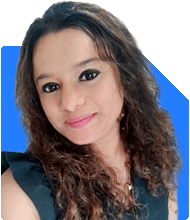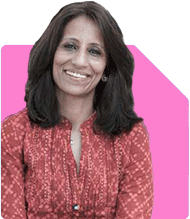I am 67 years old retired from central government service with a monthly pension of Rs. 48000 per month. I have rental income of Rs. 116000 per month from commercial space. Total expenses for me and my spouse are Rs. 70000 per month. I have fixed deposits of Rs. 3.5 Crores. Medical insurance for myself and spouse is taken care by my children. I have two daughters (both married) and they are not dependent on me. Apart from this I have small parcels of land in a tier 3 city and in rural areas worth Rs. 7 Crores.
Kindly suggest me on investment options and how to better balance my portfolio and generate better returns. How to secure the financial future of my daughters.
Ans: You have managed your financial life very well. Your pension, rental income, and large deposits show strong discipline. Your daughters are independent and your expenses are modest. You are in a very stable stage now. With your current assets, you can balance returns, safety, and legacy.
» Current Income Flow
You receive Rs. 48000 per month as pension. You also have Rs. 116000 per month from rental. That gives Rs. 164000 total monthly inflow. Your family spends Rs. 70000 per month. So you still save almost Rs. 94000 each month. This shows good financial comfort. Your surplus should be channelled wisely.
» Fixed Deposits Evaluation
Your deposits of Rs. 3.5 Crores are very safe. But returns are moderate. After tax, the growth is not strong. FD interest is fully taxable as per slab. Over years, inflation can reduce value of this corpus. It is good to keep some money in FD for emergencies. But holding entire sum here may not be efficient.
» Medical Risk Protection
Your children are taking care of medical cover. That is very helpful. You and your spouse are protected. So you need not allocate extra funds for health insurance now. But keep some liquidity for medical emergencies outside insurance.
» Land and Property Wealth
You also hold land parcels worth Rs. 7 Crores. This is significant. But such assets are illiquid. They do not give you steady income. Their value may rise, but selling may take time. For your lifetime expenses, focus more on liquid assets. Land can be part of inheritance for daughters.
» Expense and Surplus Management
Your expenses are stable and well managed. Your income is more than double your needs. This gap is a great advantage. You can use surplus to create higher returns. You can also prepare legacy planning smoothly.
» Investment Allocation Approach
You need balance between safety, growth, and liquidity.
– Keep some funds in FD for short term needs.
– Move a part into diversified actively managed mutual funds. These funds have potential for higher long-term growth. Unlike index funds, they are managed actively. Skilled managers adjust based on market conditions. Index funds just copy the index and give average returns. Active funds can deliver better risk-adjusted results.
– Keep a small part in gold through financial products. Gold can act as a hedge.
– Maintain an emergency fund of at least one year expenses in safe instruments.
» Why Not Keep All in FD
FD gives fixed return but low after-tax benefit. With inflation, value erodes. You are already above 60, so stability matters. But too much concentration in FD may reduce long-term wealth. Balanced allocation can protect and grow capital.
» Why Avoid Index Funds
Many people suggest index funds. But they have limits. They only mimic index. They do not protect during market falls. They also have no active risk control. They give average returns, not superior ones. With your wealth size, average is not enough. Actively managed funds, guided by skilled managers, are better. They select best stocks, sectors, and strategies. You should prefer them for long-term wealth building.
» Debt Fund Role
Debt funds can be considered for medium-term parking. But taxation is as per your slab. Since you already have high income, post-tax return may not be very attractive. Use them carefully for diversification, not as main allocation.
» Gold Allocation
Gold works as safety net. Do not hold physical gold in large amounts. Use sovereign gold or mutual fund gold exposure. Limit to a small share, maybe 5 to 10 percent of portfolio.
» Estate and Legacy Planning
Your daughters are independent. Still, you should secure their future. Clear estate planning is key.
– Make a proper Will. State clearly how assets should be divided.
– Register the Will for legal strength.
– Ensure nomination is updated for bank accounts, deposits, and investments.
– Consider creating a family trust if assets are complex. Trust gives smoother transfer.
– Keep communication open with daughters about your plan.
» Tax Planning Assessment
With high rental income, you already pay tax. FD interest also adds to taxable income. Active mutual funds, especially equity, are tax efficient. Long-term capital gains on equity are taxed at 12.5% beyond Rs. 1.25 lakh. This is lower than your slab rate. By shifting part of FD to equity mutual funds, you can reduce tax burden and increase return.
» Risk Management Insight
At your stage, do not take very high risk. But complete safety may also hurt returns. You should adopt a balanced model. Keep money for next 5 years in safe assets. The rest can grow in managed funds. This way, market volatility will not disturb your lifestyle.
» Role of Surplus Monthly Cash Flow
Your surplus of Rs. 94000 per month can be invested. Instead of letting it sit idle, you can set up systematic investment in mutual funds. Over years, this builds a new growth corpus. This amount is over and above your FD and land wealth.
» Gifting Strategy for Daughters
You may want to help daughters in future. Instead of sudden transfer, plan gradual gifting. You can gift investments in your lifetime. You can also leave clear allocation in Will. Structured gifting avoids disputes and ensures fair share.
» Wealth Succession Discipline
Large wealth often causes complexity after lifetime. With Rs. 7 Crores land and Rs. 3.5 Crores deposits, planning is vital. Without planning, legal disputes may arise. With a Will and nominations, your legacy flows smoothly.
» Inflation Protection Assessment
Your expenses are Rs. 70000 per month. In 10 years, this may double. FD returns may not beat such inflation. Active equity allocation will help you maintain purchasing power. This is why balancing portfolio is very important.
» Emotional Side of Money
Money is not only about returns. It is also about peace. You already have more income than expenses. This gives you security. By planning distribution and growth, you also create peace of mind for family.
» Retirement Lifestyle Security
Your lifestyle is secure even without using FD or land. Pension and rent alone cover needs. That gives you flexibility. You can invest with long horizon, not just short-term. That is a strong advantage.
» Role of Professional Review
Though you have done well, review regularly. As a Certified Financial Planner, I suggest periodic review of asset allocation. Update Will and nominations every few years. Monitor market trends and adjust investments.
» Liquidity Insight
Land is big but not liquid. FD is liquid but not tax efficient. Mutual funds balance both. They are liquid and can be redeemed easily. They are more tax efficient than FD. They also give inflation-beating returns.
» Final Insights
Your financial foundation is very strong. You have more income than you spend. You have big deposits and land assets. Your daughters are independent. Now the focus should be balance, efficiency, and legacy. Keep some funds in FD for safety. Move part into actively managed mutual funds for growth. Add small gold allocation. Plan estate through Will or trust. Use surplus monthly flow for systematic investments. This will secure your family future and protect wealth value. Your wealth is already strong, but with better allocation and planning, it can become timeless for generations.
Best Regards,
K. Ramalingam, MBA, CFP,
Chief Financial Planner,
www.holisticinvestment.in
https://www.youtube.com/@HolisticInvestment



























